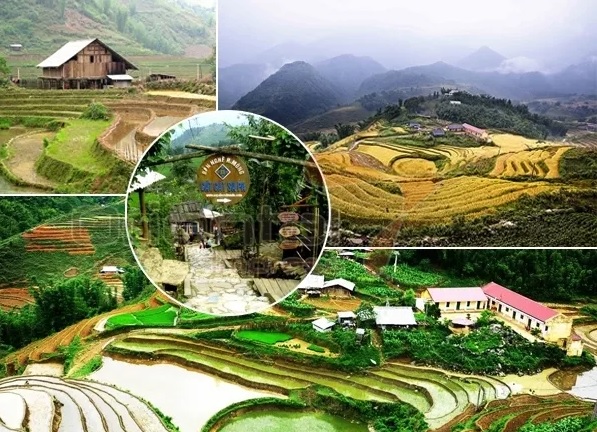Activities to boost tourism connectivity among localities have been fostered more than ever in a bid to address the difficulties imposed by the Covid-19 pandemic on the hospitality sector.

The northwest region impresses visitors with its majestic natural landscapes, distinct cultural practices and superb cuisine from ethnic minorities.
In only a short time, a number of conferences and fora have been held to link tourism development between Hanoi, Ho Chi Minh City and the north western, southwestern, central and southern provinces.
These activities have the common goal of promoting links between tourism management agencies, travel agencies, transport service providers, and accommodation establishments in an effort to create attractive products with high quality and reasonable prices.
This is a crucial task for the tourism industry at a time when Vietnam is yet to reopen its door to international visitors. Many memoranda and agreements have been made among tourism management agencies, associations, and businesses.
Localities have offered their best products to travel businesses to help them design new tours for visitors. Linkages between regions and areas make it easier for visitors to formulate their travel plans.
Localities in a same region share certain similarities in natural geography and features: the northwest region impresses visitors with its majestic natural landscapes, distinct cultural practices and superb cuisine from ethnic minorities; central provinces boast beautiful coastlines, the south-western provinces have the advantage of heavily laden fruit gardens, river-based tourist products, and folklore melodies.
These similarities led to the fact that when participating in tourism cooperation programmes, localities in the same regions offer the same products to travel agencies. For example, northern localities have tea, smoked meat, and tours to mountainous areas. This consequently leads to competition among the localities while making it difficult for travel agencies to build distinct tourist products for each locality.
Another inadequacy in promoting tourism connectivity is that they are not binding upon the signatories of the memoranda and agreements. The implementation of such documents has been reviewed only once a year rather than regularly in order to timely fix any problems arising.
In order to address the shortcomings, the Vietnam National Administration of Tourism needs to consolidate its role as coordinator and supporter for localities in implementing their commitments.
The localities themselves should collect opinions from experts and travel agencies in selecting their most representative tourist products which can make them stand out from others.
It is also necessary to establish a fund for facilitating tourism connectivity, which can help to allocate proper financial support to localities to promote tourism and develop products and linkages.
As Vietnam is doing well in its containment of the Covid-19 pandemic, it is expected the country’s tourism sector will gradually recover in 2021. In this context, enhancing connectivity between tourism service providers and promoting the role of major travel companies are both crucial factors for domestic tourism to reboot itself post-Covid-19. Therefore, more drastic measures are needed to remove the above-mentioned obstacles and increase the efficiency of tourism connectivity, thus enhancing the overall competitiveness of Vietnam’s tourism.